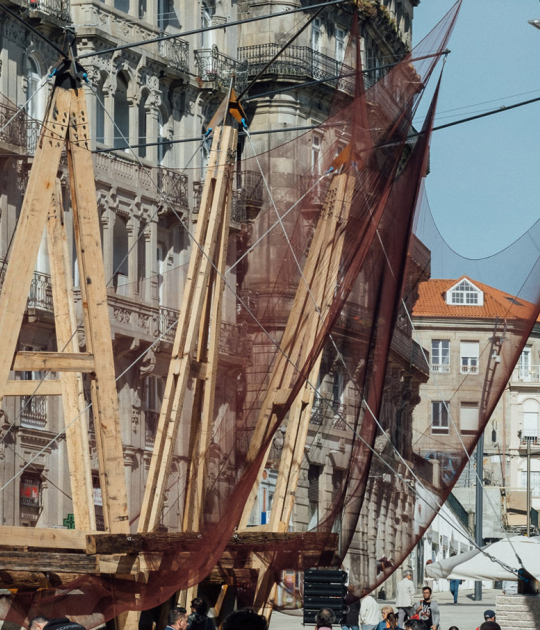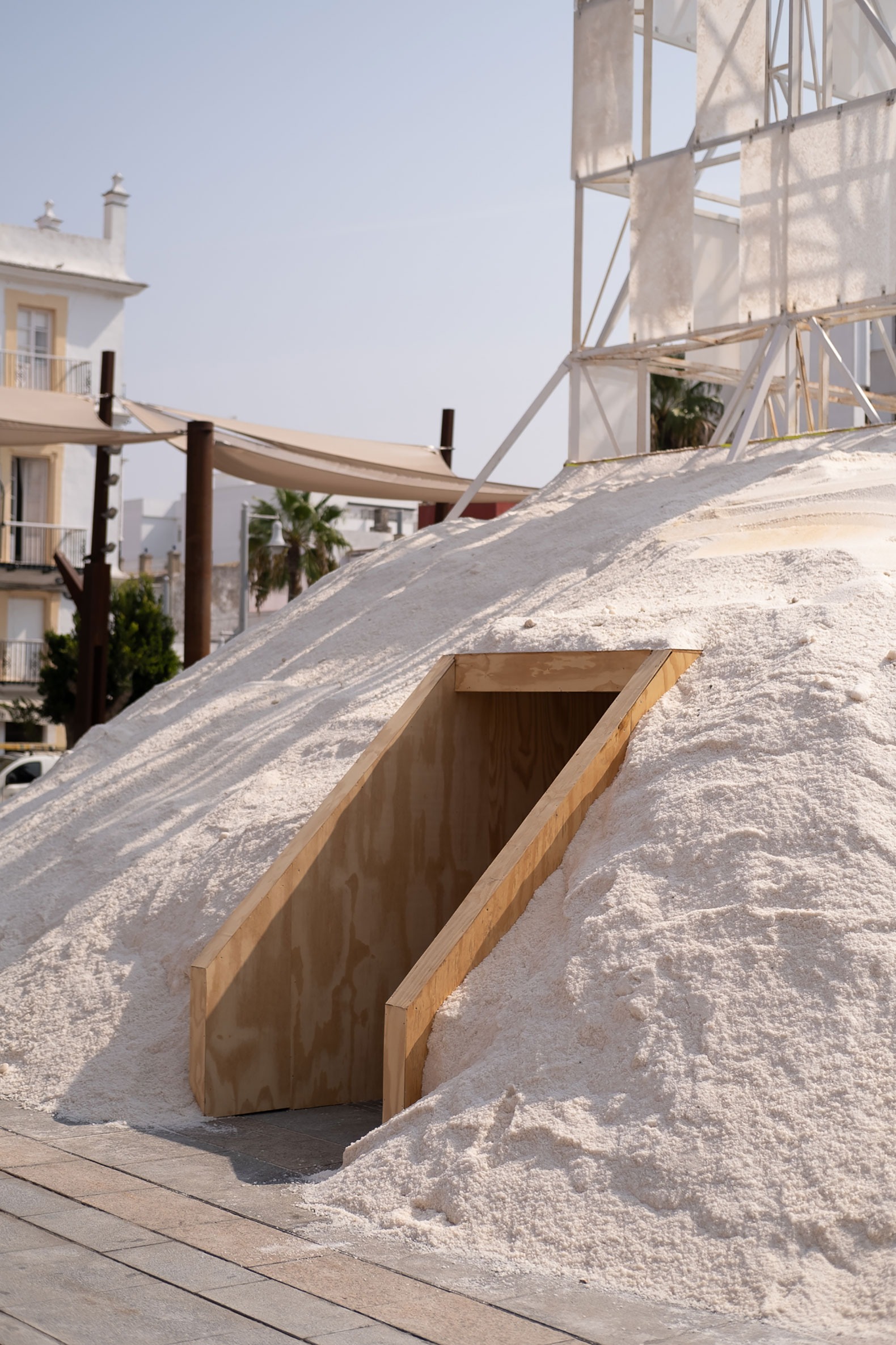
This new edition of TAC! Urban Architecture Festival 2024, promoted by the Ministry of Housing and Urban Agenda (MIVAU) and the Arquia Foundation, has been held in two Spanish cities. First, the city of Vigo hosted "¡Qué faena(r)!", designed by architects Óscar Cruz and Pablo Paradinas, and now in San Fernando with the "La Sal" pavilion, designed by architects José Rodríguez and Carlos Montes.
Inspired by historical and cultural heritage, the projects featured in the third edition of TAC! take a look at the local and the vernacular or other relevant issues, such as the climate or the local economy, as their main theme. In this way, the salt flats of San Fernando in the case of La Sal, or the fishing tradition of the Vigo rafts in the case of the project What a task(r)!, inspire two projects that aim to be an example of how architecture can transform people's lives.
The temporary pavilion designed by José Rodríguez and Carlos Montes reflects on the regeneration of urban space in a dialogue between the environment and its resources, through a volume that emulates the shape of one of the mountains of salt common in the nearby area. The project seeks to activate the potential of the most abundant and sustainable natural resources in the province of Cádiz, using architecture as a tool to transform public space.

The project, located in Plaza del Rey, proposes a meeting point that invites reflection on the regeneration of the territory and the urban and its transformation through elements related to the traditional economy in a sustainable way. Presided over by the building that houses the town hall, Plaza del Rey represents a new urban centrality within the linear structure that is Calle Real and the unique set of public spaces linked along its route that has been consolidated.
From the centrality in which the La Sal pavilion is located, the project emerges towards the outside, establishing a dialogue with the coast of the city of Cádiz, the salt industry and its resources. La Sal is based on three materials with deep roots in the local area: together with salt as the main element, wood and steel give shape to the temporary pavilion.
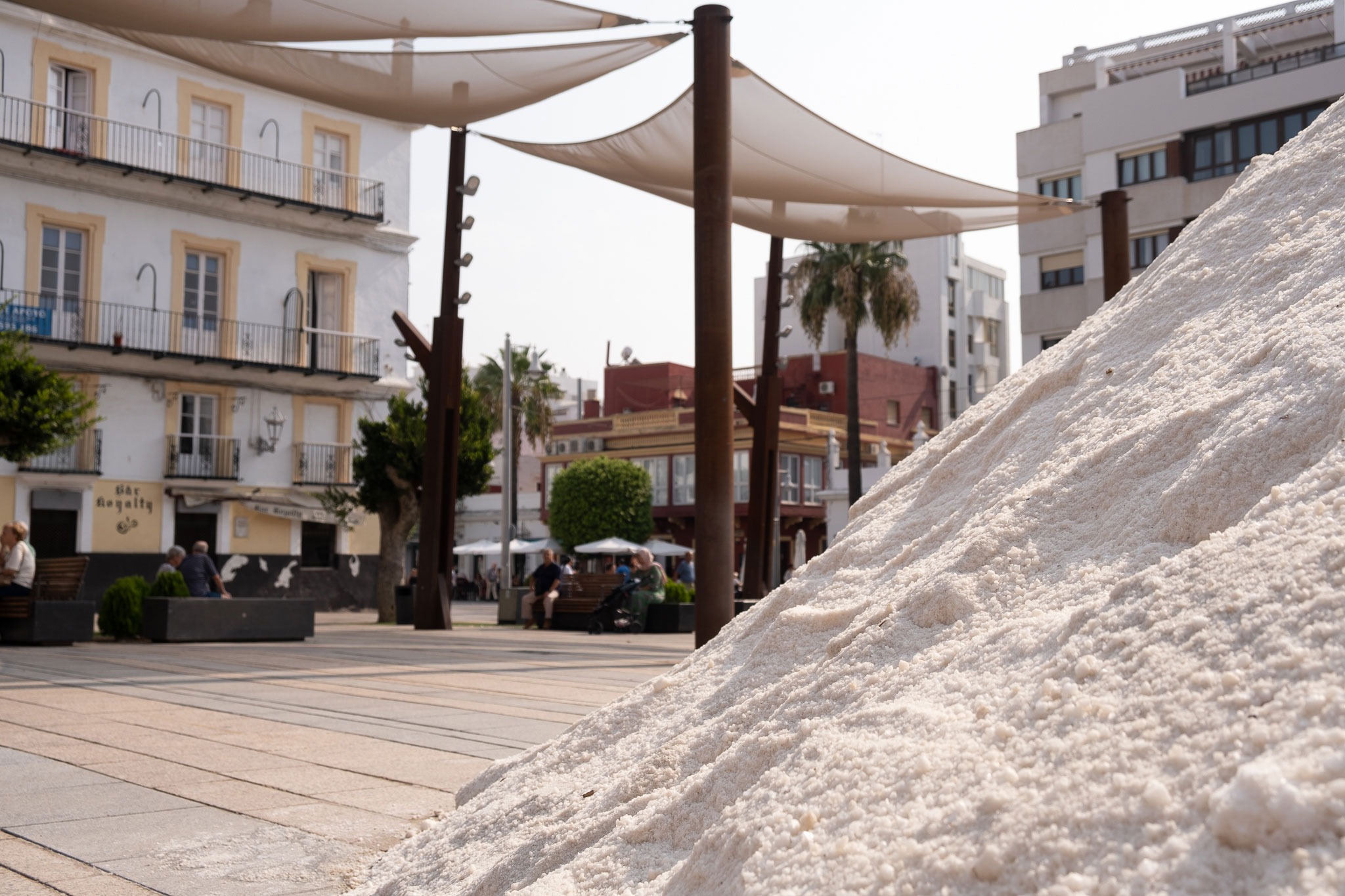
The construction process is based on the need to find sustainable alternatives to industrial construction materials, so it proposes a process that combines innovation with traditional processes that praise salt as a key material not only in terms of identity, but also in terms of sustainability. It proposes salt as an alternative to cement, experimenting with the natural process of crystallization for use in construction.
Contemporary architecture, tradition, experimentation and public space are thus connected in a festival that can be enjoyed until October 14 in the Plaza de Rey de San Fernando, in Cádiz.

La Sal, pavilion TAC! 2024 by José Rodríguez and Carlos Montes. Photograph by José Guilherme Marques.
Project description by José Rodríguez and Carlos Montes
From the centrality of the space in which we are situated, the Plaza del Rey, we emerge towards the outside; the environment and its resources. Focusing on the urban and the social, the construction of the pavilion is centred on the materiality and use of components of the town, as well as on the historical and cultural heritage; an identity heritage that dialogues closely with the citizens.
In the San Fernando project, presented by its city council, the concept of public space stands out as a vital component of a successful city, which involves a competitive strategy based on knowledge and information, and not on mass consumption, where culture becomes a driving force of change and a driving force of the economy and employment in the city.

The Bay of Cadiz, its coastline and the towns that make up this unique landscape environment constitute one of the most unique enclaves, both geographically and historically, in Andalusia.
The Plaza del Rey, presided over by the building that houses its town hall, represents a new urban centrality within the linear structure that is Calle Real and the unique set of public spaces linked along its route that has been consolidated.

La Sal
The coast of the province of Cádiz and its unique landscape surroundings constitute one of the natural enclaves with the greatest heritage, architectural and identity interest. So much so that the fauna that surrounds the salt mines has depended on the process of the birth of salt. The birds that are located near these large places find food for their young in them depending on the state of the tides. The first classical references regarding solar evaporation salt mines are found in Tito Livio and Plinio, and today it can be said that the salt cultivation processes have changed very little.
In addition to the traditional uses of salt, there are multiple applications that can offer an economic and social boost to the place where it is found. These applications, based on the combination of new technologies and vernacular processes, bring out the most interesting aspects of ancestral knowledge and the potential of digital tools that operate in today's world.
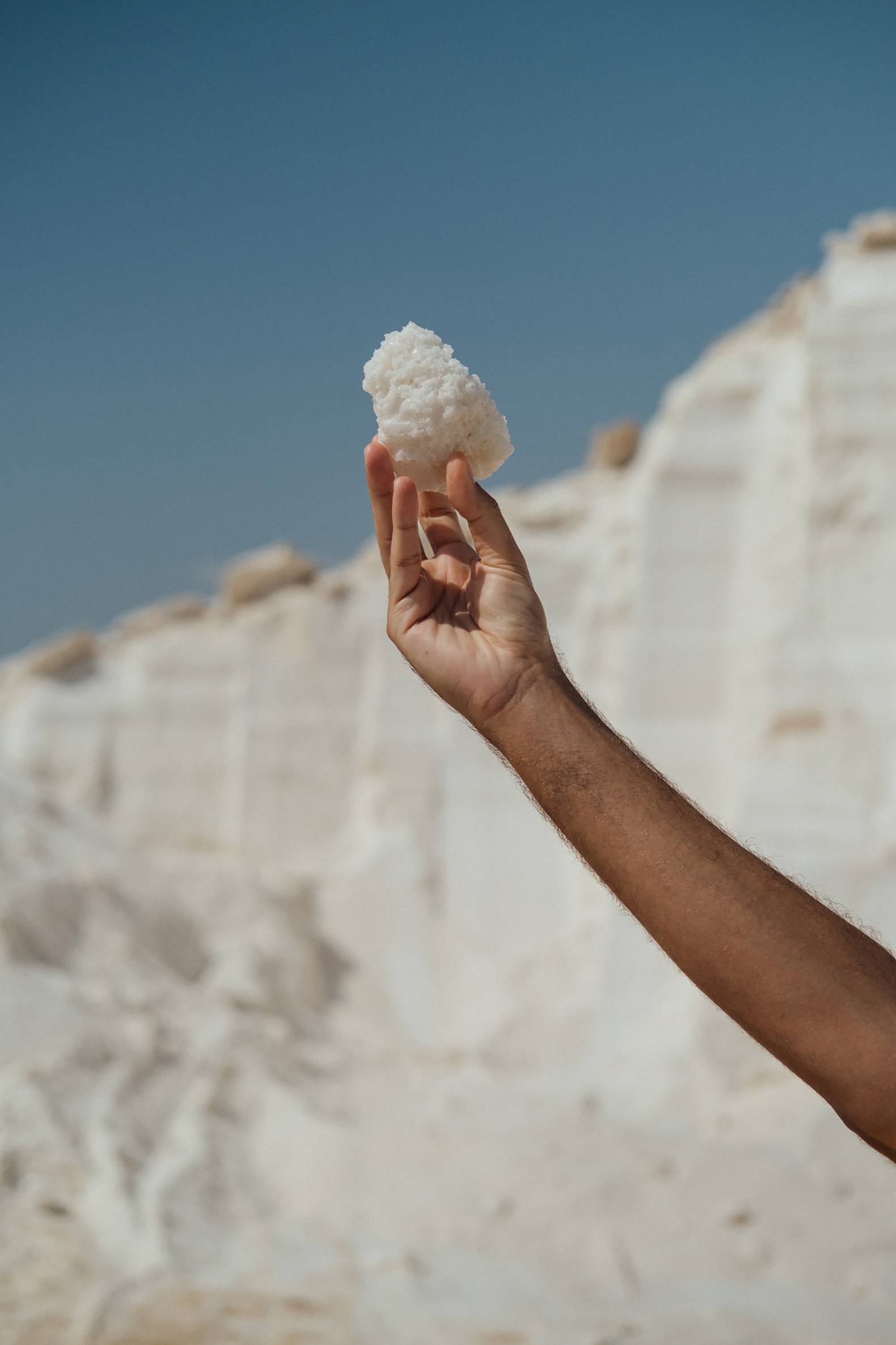
Creation of the La Sal boards
This process starts with the use of a base element such as recycled methacrylate. Its surface, conditioned to have a greater adhesion capacity, is covered by a layer of resin, using only manual means, on which the salt is poured.
This salt has been raised exclusively in the crystallizer of the salt mine to obtain the whitest and purest crystal. This way, the panels have the cleanest and clearest image of what the salt formation process represents. Afterwards, a protective layer is applied and they are ready for placement.
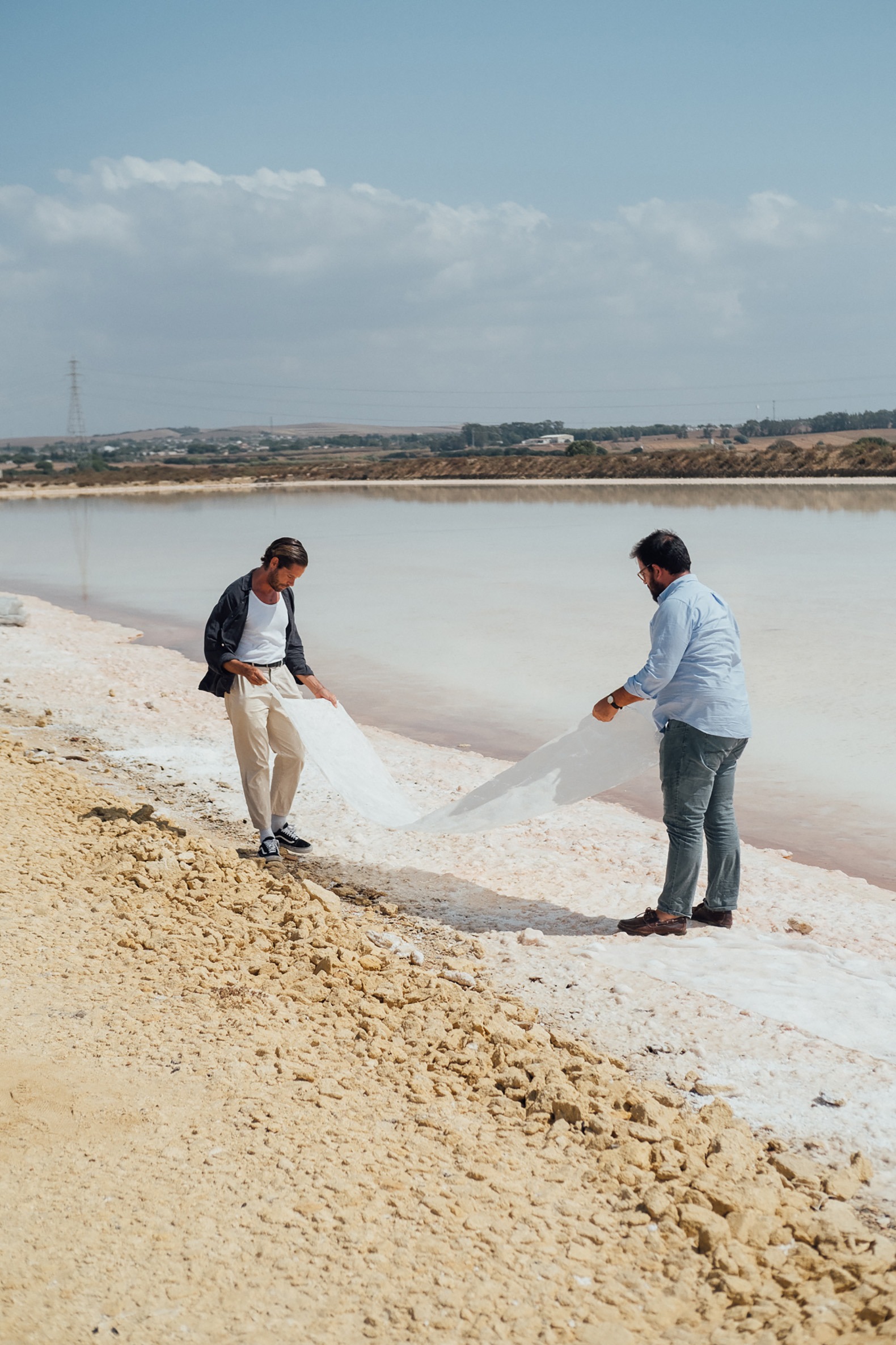
Durability, reuse and sustainable principles
The Pavilion uses three materials for its construction: salt, wood and steel.
The salt is used to form the base of the pavilion, emulating the traditional mountains of salt so common in the nearby landscape. To contain the salt, plywood boards are used. Due to their delimitation state, these elements define the continuity between the stationary/permeable, centre/contour, open/exposed. The interior and exterior that participate and the interior that exposes. The emerging element, which reminds us of the old metal structures of the means used in the transport and transfer of salt, is built using a white lacquered structure.
On this emerging element, this sort of Tower of Hercules, Temple of Hercules, sanctuary that existed in the ancient Gadeiras Islands and later surveillance system since 1610; the salt panels will be installed as an envelope for the chrysalis in which the user enters to recognise, assume and visualise the potential of this dialogue between history and mythology, human development, coexistence, connectivity and social inclusion.



















































